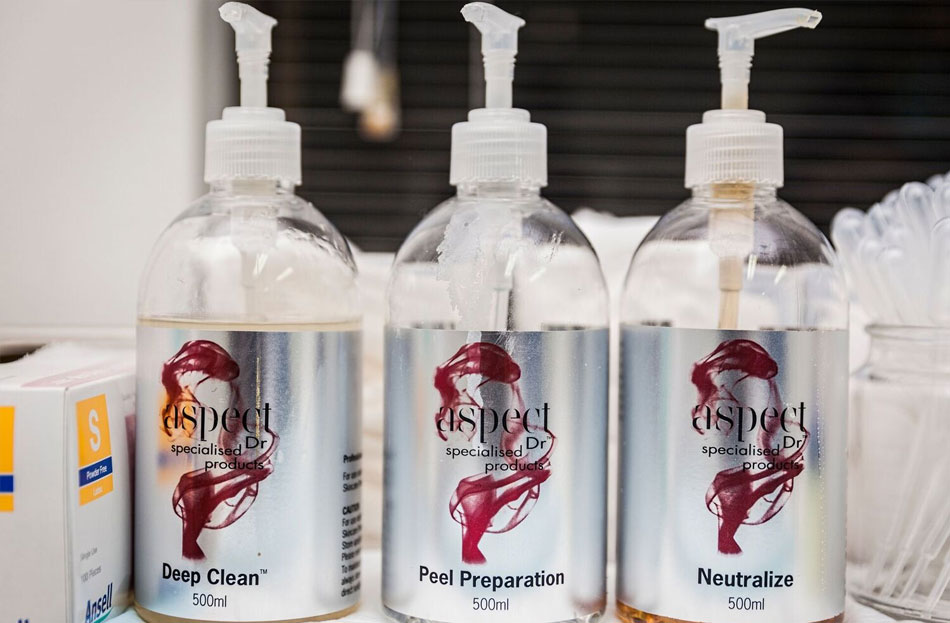Chemical Peels

Chemical peels remove superficial layers of skin to improve the appearance and texture of the skin. It is a safe and effective way to treat damage caused by hereditary conditions, pregnancy, hormones, sun exposure and ageing.
Peels can assist with the improvement in appearance of :
- Generalised redness or telangiectasia
- Pigmented areas such as freckles
- Fine lines and wrinkles
- Enlarged or clogged pores
- Acne breakouts
- Scars
- Stretchmarks
- Dry, flaky skin
The skin’s outer epidermis, or superficial layers, are made up of dead skin cells. In young skin, natural skin cell turnover usually follows a four-week renewal cycle. However, the speed of this cell turnover cycle slows with age.
Certain skin conditions, and the ageing process, can result in excessive build up of dead skin cells, which make the skin appear dull, thick and congested. A chemical peel is used to gently remove this outer layer of dead cells that have accumulated on the surface of the skin. This produces an initial thinning of the thickened skin, resulting in an improvement in the appearance and texture of the skin.
Regular chemical peels can increase the skin’s natural skin cell turnover rate, while combating the visible changes that come with ageing. The result is smoother, brighter, more youthful looking skin.
How many treatments will be needed?
While some temporary improvement to the appearance of the skin may occur from the first peel, the number of peels required to achieve a more permanent change is influenced by several clinical and personal factors, such as your skin type, your age, your lifestyle, your medical conditions and medications and your skin’s individual response to the peels. At your initial consultation you will be given an estimate of the number of treatments that we recommend for your skin.
Treatments are usually 2-4 weeks apart. It may be preferable to have a very superficial, mild peel initially, before determining the course of treatments best suited to your skin.
What does a chemical peel feel like?
The sensation of a chemical peel varies from patient to patient. It is also dependent on the type of peel, the strength of the peel and also the area being treated.
Patients interested in knowing whether a course of chemical peels is right for their skin should make a consultation appointment with one of our treating nurses by calling our reception staff on (02) 9953 9522.



